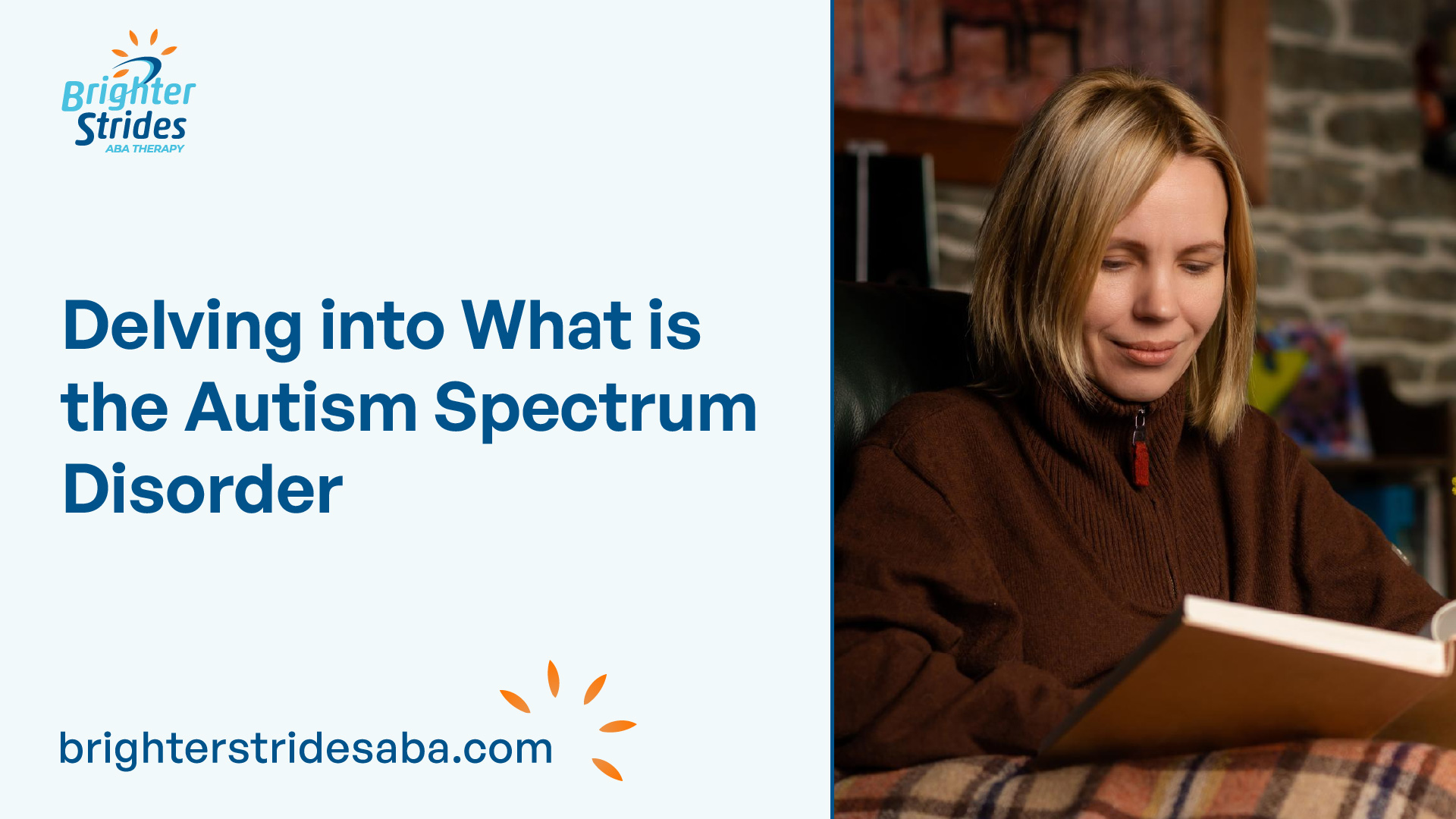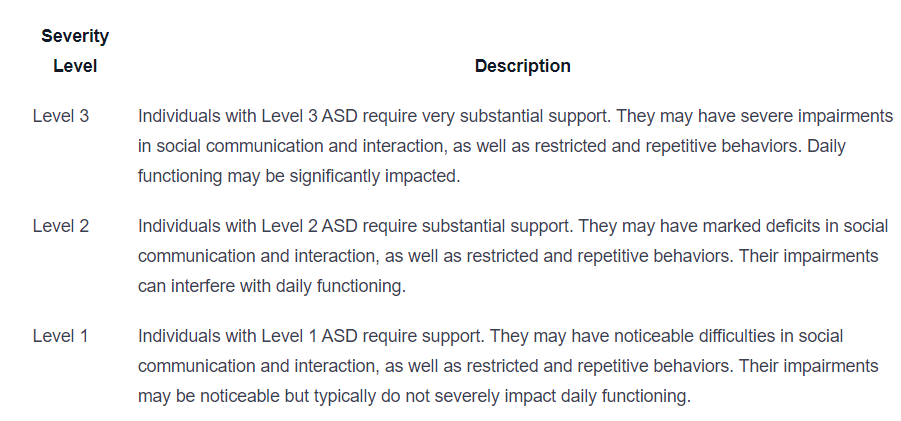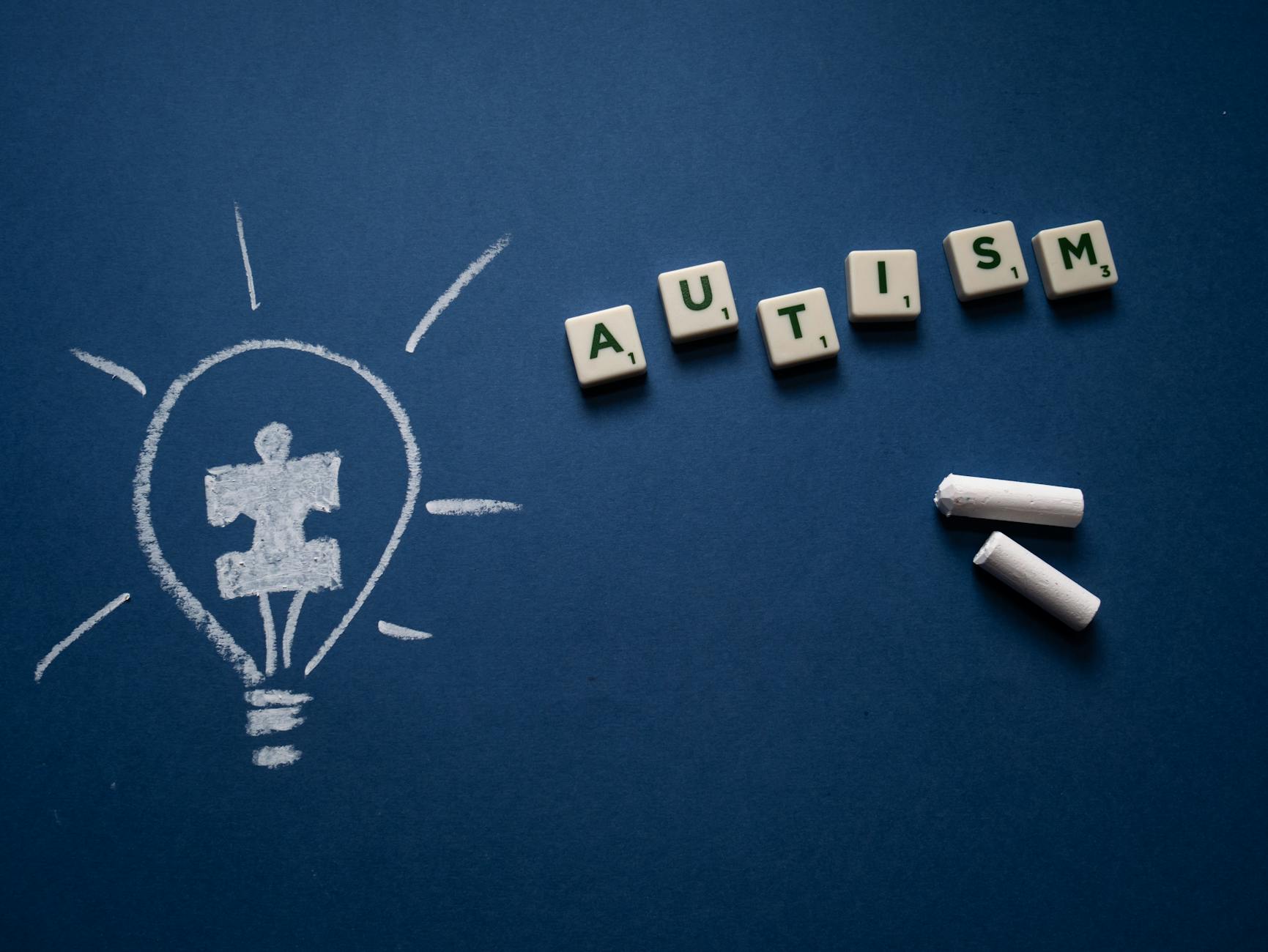Understanding Autism Spectrum Disorder
Autism Spectrum Disorder (ASD) is a complex neurodevelopmental condition that affects how individuals perceive and interact with others, as well as their communication abilities. It is characterized by difficulties in social interaction, communication challenges, and restricted and repetitive patterns of behavior. The term “spectrum” refers to the wide range of symptoms and severity that can be observed in individuals with ASD.
Definition and Overview
ASD is a condition related to brain development that typically becomes apparent in early childhood. The exact cause of ASD is still not fully understood, but it is believed to result from a combination of genetic and environmental factors. Some individuals with ASD have a known genetic condition, while the causes in others are still unknown.

ASD encompasses various conditions, including autism, Asperger’s syndrome, childhood disintegrative disorder, and an unspecified form of pervasive developmental disorder. The term “Asperger’s syndrome” is still used by some individuals to describe a specific form of ASD. The key characteristic of ASD is the presence of difficulties in social interaction and communication, along with the presence of repetitive behaviors or intense interests.
Symptoms and Characteristics
The symptoms and characteristics of ASD can vary widely among individuals, which is why it is referred to as a spectrum disorder. However, there are common features that may be observed in individuals with ASD. These include:
- Challenges in social interaction: Individuals with ASD may struggle with understanding and responding to social cues, such as maintaining eye contact, understanding facial expressions, and engaging in reciprocal conversation. They may also have difficulty forming and maintaining relationships.
- Communication difficulties: Communication can be challenging for individuals with ASD. Some may have delayed language development, while others may have difficulty understanding and using nonverbal communication, such as gestures and body language. They may also exhibit repetitive or unusual speech patterns.
- Restricted and repetitive behaviors: People with ASD often engage in repetitive behaviors, such as hand-flapping, rocking, or lining up objects. They may also have intense, specific interests and struggle with changes in routines or environments.
It’s important to note that the severity of symptoms can vary widely among individuals with ASD. Some individuals may require significant support in their daily lives, while others may be highly independent.
Understanding the definition, overview, and symptoms of ASD is crucial for promoting awareness and acceptance of individuals with this condition. By recognizing the unique challenges faced by individuals on the autism spectrum, we can work towards creating a more inclusive and supportive society.
Diagnosis and Evaluation
To understand autism spectrum disorder (ASD), it’s important to explore the diagnostic criteria and the process of screening and monitoring individuals for this condition.
Diagnostic Criteria
To meet the diagnostic criteria for Autism Spectrum Disorder according to the DSM-5 (Diagnostic and Statistical Manual of Mental Disorders, 5th Edition), an individual must exhibit persistent deficits in each of three areas of social communication and interaction, as well as at least two of four types of restricted, repetitive behaviors. This criteria helps professionals make an accurate diagnosis and classify individuals on the autism spectrum.
Previously, individuals with a well-established DSM-IV diagnosis of autistic disorder, Asperger’s disorder, or pervasive developmental disorder not otherwise specified should now be given the diagnosis of autism spectrum disorder. It’s important to note that individuals who have marked deficits in social communication, but do not meet the criteria for autism spectrum disorder, should be evaluated for social (pragmatic) communication disorder.
Screening and Monitoring
Screening and monitoring play a crucial role in the early identification and ongoing evaluation of individuals with autism spectrum disorder. Screening tools are designed to identify individuals who may be at risk for ASD and require further evaluation. These tools are typically used during regular check-ups in a healthcare setting.
Ongoing monitoring is important to assess the developmental progress of individuals with ASD. Regular evaluations can help track changes in behavior, communication, and social skills over time. This information is valuable in determining the effectiveness of interventions and treatments.
Parents, caregivers, and healthcare professionals should remain vigilant for any signs or symptoms of ASD. Early intervention and support can significantly improve outcomes for individuals on the autism spectrum. If any concerns arise, it is recommended to consult with a healthcare provider who specializes in developmental disorders.
By following the diagnostic criteria and implementing screening and monitoring processes, healthcare professionals can accurately identify and evaluate individuals with autism spectrum disorder. This leads to timely interventions and support, which are vital in promoting positive developmental outcomes for individuals on the autism spectrum.
Treatment Approaches
When it comes to addressing the symptoms and challenges associated with Autism Spectrum Disorder (ASD), various treatment approaches have been developed to support individuals on the spectrum. These approaches focus on enhancing skills, improving communication, and promoting overall well-being. The treatment approaches for ASD include behavioral therapies, developmental therapies, educational interventions, and pharmacological treatments.
Behavioral Therapies
Behavioral Therapies, such as Applied Behavior Analysis (ABA), are widely accepted among educators and healthcare professionals as effective treatments for ASD. These therapies employ evidence-based techniques to encourage desired behaviors and discourage undesired behaviors, aiming to improve a variety of skills.
Two notable teaching styles within behavioral therapies are:
- Discrete Trial Training (DTT): This method breaks down complex skills into smaller, more manageable steps. It involves structured and repetitive teaching, reinforcing positive behaviors and providing corrective feedback when necessary.
- Pivotal Response Training (PRT): PRT focuses on pivotal areas of development, such as motivation, self-initiation, and responsiveness to multiple cues. It aims to improve communication, social interaction, and behavior by capitalizing on a child’s interests and natural motivations.
Developmental Therapies
Developmental therapies for individuals with ASD focus on improving specific developmental skills, language skills, and physical skills to enhance independence and daily functioning. Speech and Language Therapy and Occupational Therapy are examples of developmental therapies commonly utilized in the treatment of ASD [4].
Speech and Language Therapy aims to improve communication skills, including spoken language, nonverbal communication, and social interaction. Occupational Therapy focuses on enhancing fine motor skills, sensory integration, self-care abilities, and adaptive behavior, enabling individuals with ASD to engage more effectively in daily activities.
Educational Interventions
Educational Treatments play a crucial role in supporting individuals with ASD within classroom settings. One notable approach is the Treatment and Education of Autistic and Related Communication-Handicapped Children (TEACCH). This educational intervention provides structured routines, visual learning tools, and clear instructions to improve academic outcomes and facilitate a better understanding of social situations.
TEACCH emphasizes individualized teaching methods, allowing for personalized instruction based on each student’s strengths and needs. By utilizing visual supports and predictable schedules, individuals with ASD can better navigate their educational environment.
Pharmacological Treatments
Pharmacological Treatments may be utilized to manage co-occurring symptoms in individuals with ASD, such as hyperactivity, anxiety, depression, seizures, sleep problems, or gastrointestinal issues. These treatments are typically prescribed and overseen by healthcare professionals experienced in treating individuals with ASD [4].
It is important to note that pharmacological treatments are not intended to target the core symptoms of ASD but rather address specific conditions that may coexist with ASD. Each individual’s treatment plan should be tailored to their unique needs, and any medication decisions should be made in consultation with healthcare professionals.
By incorporating a combination of these treatment approaches, individuals with ASD can receive comprehensive support to enhance their development, communication skills, and overall quality of life. It is important to remember that early intervention and individualized treatment plans can have a significant positive impact on outcomes for individuals with ASD.
Causes and Factors
Understanding the causes and factors contributing to autism spectrum disorder (ASD) is a complex task due to the wide range of symptoms and severity associated with the disorder. Although there is no single known cause, research suggests that a combination of neurodevelopmental origins, genetic factors, and environmental influences contribute to the development of ASD.
Neurodevelopmental Origins
ASD is considered a condition related to brain development. It affects how individuals perceive and socialize with others, resulting in difficulties in social interaction and communication, as well as restricted and repetitive patterns of behavior. The term “spectrum” refers to the wide range of symptoms and severity encompassed by the disorder.
The exact neurodevelopmental origins of ASD are not fully understood. Research suggests that disruptions in early brain development, including abnormal connectivity and communication between different regions of the brain, may contribute to the development of ASD. These disruptions often occur during prenatal development and early infancy, possibly influenced by a combination of genetic and environmental factors.
Genetic and Environmental Influence
Both genetic and environmental factors are believed to play a role in the development of ASD. Studies have shown that certain genes are associated with an increased risk of developing the disorder. However, it’s important to note that no single gene has been identified as the sole cause of ASD. The genetic contributions to ASD are multifactorial and involve the interaction of multiple genes.
Environmental factors also contribute to the development of ASD. Prenatal exposures, such as maternal infections, certain medications, and complications during pregnancy or birth, have been linked to an increased risk of ASD. However, it’s important to remember that not all individuals exposed to these factors will develop the disorder, and not all individuals with ASD have had these exposures.
It is likely that the interplay between genetic and environmental factors contributes to the complex nature of ASD. Further research is needed to fully understand the mechanisms by which these factors interact and contribute to the development of the disorder.
Exploring the causes and factors associated with ASD provides insights into the complexity of the disorder. By understanding the neurodevelopmental origins and the influence of genetic and environmental factors, researchers can continue to advance our knowledge of ASD and develop more effective interventions and support for individuals on the autism spectrum.
Spectrum Variation and Impact
Autism Spectrum Disorder (ASD) is characterized by a wide range of symptoms and severity levels. Understanding the spectrum variation and its impact is crucial in gaining a comprehensive understanding of this complex disorder.
Severity Levels
ASD is classified into three severity levels based on the level of support individuals require in their daily lives [3]. These severity levels are as follows:

Each person with ASD is unique, and the severity level can vary widely. It’s important to remember that these levels are used as a guideline to determine the level of support an individual may require and do not define a person’s worth or potential.
Challenges in Daily Life
Living with ASD can present various challenges in daily life. Adolescents and young adults with ASD may face difficulties in developing and maintaining friendships, communicating with peers and adults, and understanding expected behaviors in school or work settings. Additionally, individuals with ASD may have comorbid conditions such as anxiety, depression, or attention-deficit/hyperactivity disorder.
The impact of ASD on daily life can vary depending on the individual. Some individuals with ASD may have difficulty learning, while others may exhibit signs of lower than normal intelligence. Conversely, some individuals may have normal to high intelligence and learn quickly but struggle to communicate, apply knowledge in everyday life, and adjust to social situations. The severity of the disorder can be based on the level of impairments and their impact on daily functioning.
It’s important to understand that individuals with ASD have unique strengths and challenges. With appropriate support, interventions, and accommodations, individuals with ASD can lead fulfilling lives and achieve their full potential.
Myths and Facts
When it comes to autism spectrum disorder (ASD), there are several misconceptions and myths that can contribute to misunderstandings and stigma. It’s important to address these misconceptions and clarify the facts surrounding ASD.
Misconceptions Addressed
- ASD is caused by bad parenting or neglect: This is a common misconception that puts blame on parents. However, ASD is a neurodevelopmental disorder that is not caused by parenting style or actions. It is a complex condition with both genetic and environmental factors playing a role in its development.
- All individuals with ASD have intellectual disabilities: While some individuals with ASD may have intellectual disabilities, it is not a universal characteristic. The range of intellectual abilities among people with ASD is broad, with some individuals having normal to high intelligence. Each individual with ASD has a unique pattern of behavior and level of severity.
- Autism can be cured: There is no known cure for ASD. However, early intervention and appropriate therapies can help individuals with ASD develop important skills and improve their quality of life. Treatment approaches focus on managing symptoms, improving communication and social skills, and enhancing overall functioning. It’s important to provide support and acceptance for individuals with ASD rather than seeking a cure.
Vaccination Controversy Clarified
A widely debunked myth surrounding ASD is the belief that childhood vaccines, particularly the measles-mumps-rubella (MMR) vaccine, are a cause of the disorder. This misconception stems from a discredited study that has since been retracted due to poor design and questionable research methods. Extensive research has found no reliable evidence linking ASD to childhood vaccines [2].
In fact, avoiding childhood vaccinations can have serious consequences. It not only puts the unvaccinated child at risk but also contributes to the spread of preventable diseases such as measles, mumps, and whooping cough, which can have severe health implications for the general population. It is crucial to prioritize vaccinations to protect the health and well-being of individuals, including those with ASD.
By addressing these misconceptions and clarifying the facts, we can foster a better understanding of ASD and create a more inclusive and supportive environment for individuals on the autism spectrum.
References
- https://www.cdc.gov/ncbddd/autism/facts.html
- https://www.mayoclinic.org/diseases-conditions/autism-spectrum-disorder/symptoms-causes/syc-20352928
- https://www.cdc.gov/ncbddd/autism/hcp-dsm.html
- https://www.cdc.gov/ncbddd/autism/treatment.html
- https://www.ncbi.nlm.nih.gov/pmc/articles/PMC5733418/

 We've just released an article!
Check out our blog!
We've just released an article!
Check out our blog!



